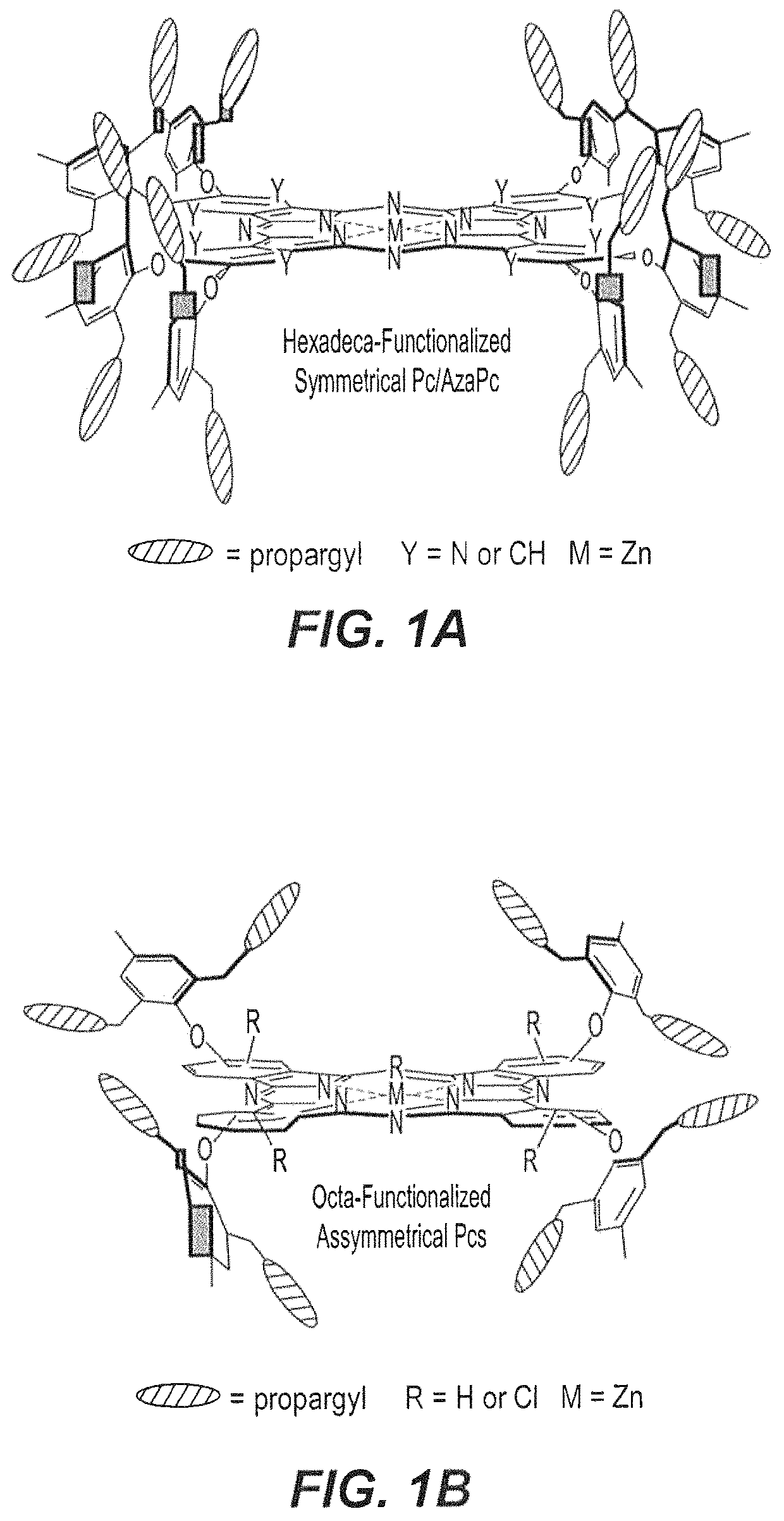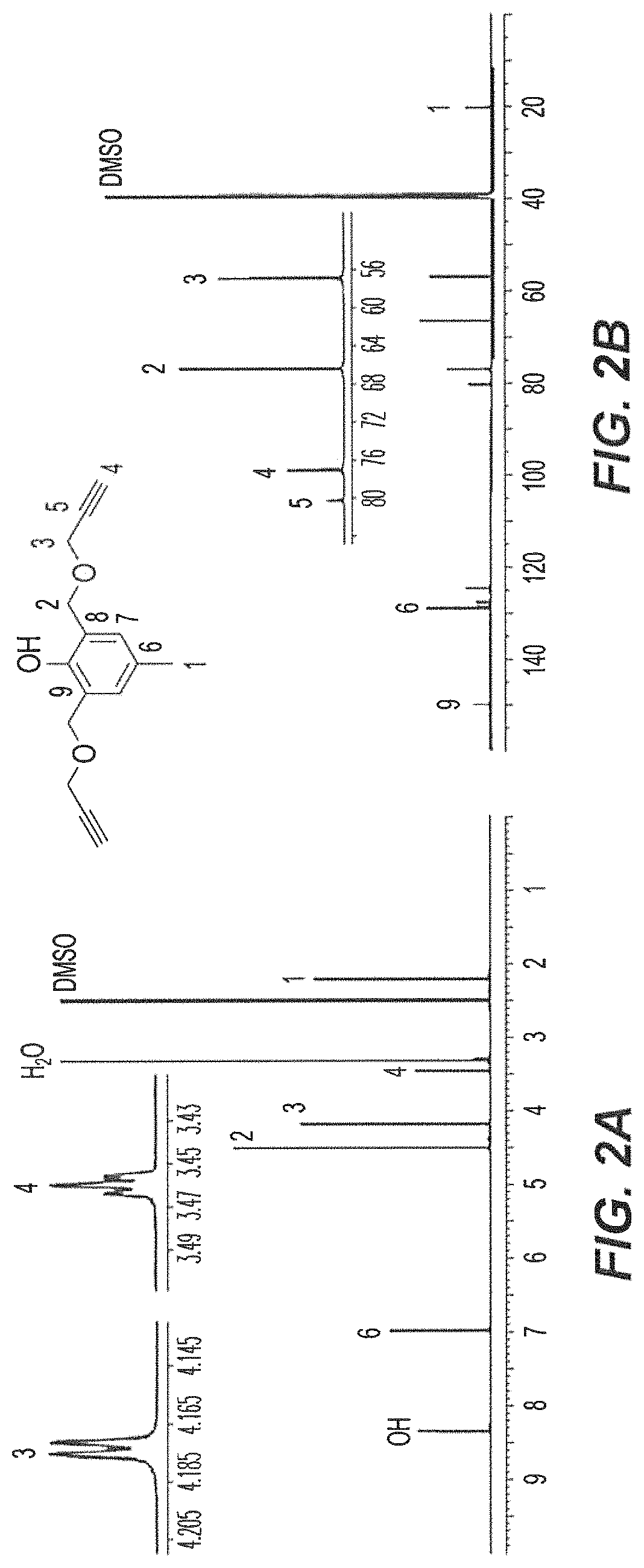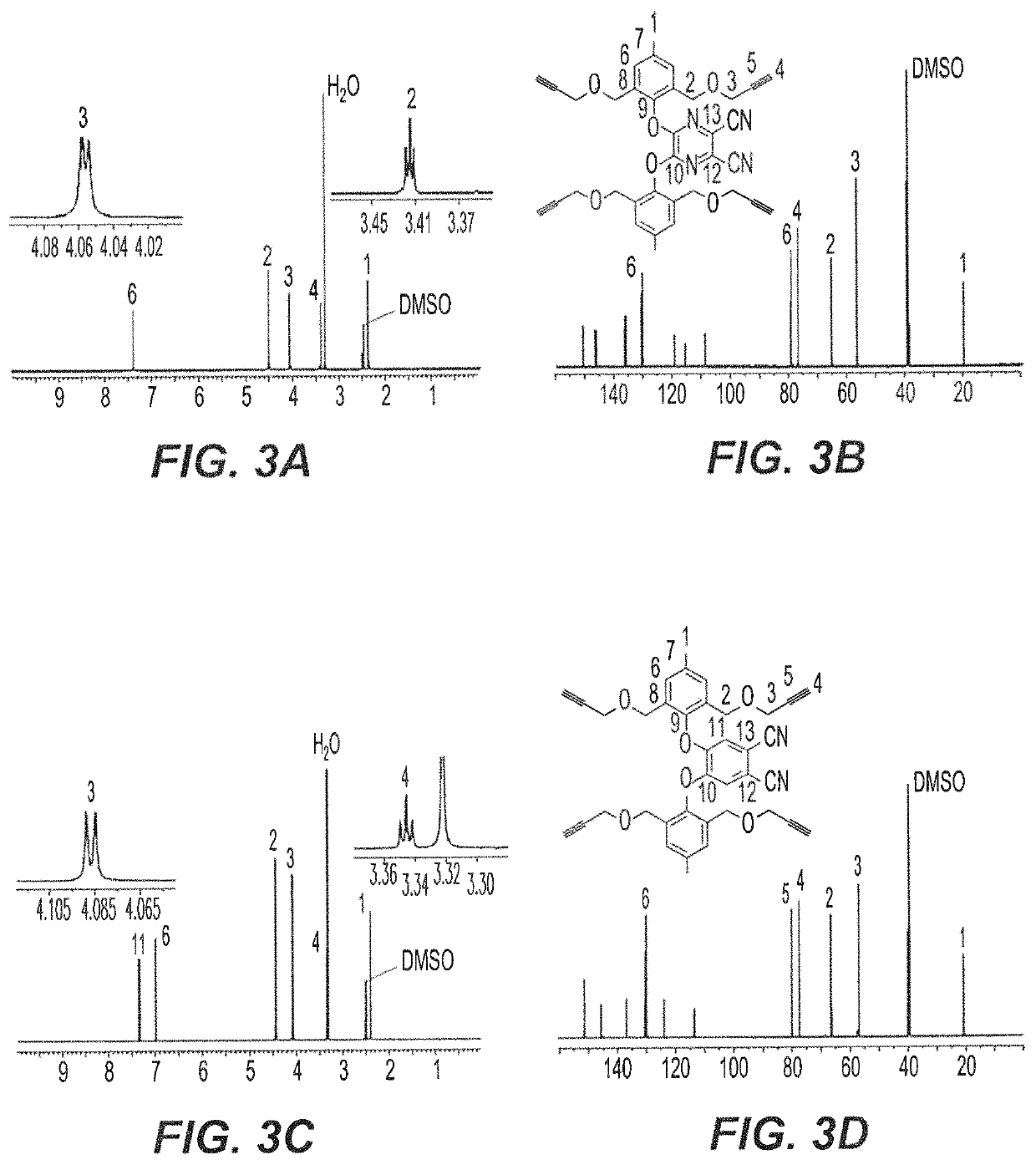Propargyl-functionalized macrocyclic compounds
a technology propargyls, which is applied in the field of azaphthalocyanine, naphthalocyanine, and phthalocyanine derivatives, can solve the problems of difficult purification, low yield, and the generation of functionalized macrocyclic compounds, and achieve optimal physicochemical properties, efficient solubility, and improved photo-sensitivity.
- Summary
- Abstract
- Description
- Claims
- Application Information
AI Technical Summary
Benefits of technology
Problems solved by technology
Method used
Image
Examples
example 1
Synthesis of Di-Propargyl p-Cresol 2
[0059]Initially, 2,6-bis(methylbromo)-p-cresol 1 was prepared in 51% yield according to the procedure described in Example 13 herein upon the reaction of 2,6-bis(methylhydroxyl)-p-cresol with 33% HBr in glacial acetic acid. As shown in the reaction scheme below, Compound 1 was then treated with propargyl alcohol for the synthesis of di-propargyl-p-cresol 2. The reaction was performed in dry tetrahydrofuran (THF) in the presence of NaH (60%) at 0° C. to room temperature, overnight to obtain the desired product 2 in 55% yield.
[0060]
[0061]The novel cresol derivative 2 was fully characterized using NMR, HRMS and FT-IR spectral data and CHNX elemental analysis (FIGS. 2A-2B). In the 1H-NMR spectrum (600 MHz, DMSO-d6, 25° C.) (FIG. 2A), the benzylic protons (—CH3, H1) were observed as a singlet at 2.20 ppm; terminal ethynyl protons (—CoCH, H4) were observed as a triplet at 3.46 ppm with a J-value of 2.6 Hz; methyleneoxy protons (—CH2OCH2CCH, H3) were obs...
example 2
Synthesis of Tetra- and Di-Propargyl Precursors 3-7
[0062]Cresol derivative 2 undergoes a nucleophilic substitution reaction for the synthesis of tetra-propargyl (3 and 4) and di-propargyl (5-7) precursors. As shown in the reaction schemes below and described in detail in Examples 14-17 herein, AzaPc-subunit 3 was obtained in gram quantity (97%) upon the reaction of compound 2 with 5,6-dichloro-2,3-dicyan-1,4-pyrazine in the presence of anhydrous K2CO3 in dry acetonitrile (25° C.) room temperature, overnight, while Pc-precursor 4 was obtained at a rate of 64% from the reaction of cresol derivative 2 with 4,5-dichlorophthalonitrile in the presence of anhydrous CsF in hot dry DMF (100° C. to room temperature, overnight).
[0063]
[0064]For mono-phenoxyl substituted Pc-intermediates, 4,5-dichloro, 4- and 3-nitrophthalonitriles were employed as starting materials for synthesis of di-propargyl Pc-precursors 5-7, respectively. As shown in the reaction schemes below, the reaction of 4,5-dichlor...
example 3
Synthesis of AzaPc1 / Pc2-Pc5
[0066]As depicted in the reaction schemes below, all precursors 3-7 were subjected to zinc (II) mediated cyclotetramerization reactions for the construction of hexadeca- and octa-propargyl functionalized macrocyclic structures, AzaPc1 and Pc2-Pc5. All reactions were performed in dry pentanol in the presence of Zn(OAc)2 and a catalytic amount of DMEA at high temperature (140° C.). The cyclization processes were carried out for 2-5 hours and resulted in formation of zinc (II) cyclic-tetramers in yields of 28-43%.
[0067]
PUM
| Property | Measurement | Unit |
|---|---|---|
| excitation wavelength | aaaaa | aaaaa |
| excitation wavelength | aaaaa | aaaaa |
| temperature | aaaaa | aaaaa |
Abstract
Description
Claims
Application Information
 Login to View More
Login to View More - R&D
- Intellectual Property
- Life Sciences
- Materials
- Tech Scout
- Unparalleled Data Quality
- Higher Quality Content
- 60% Fewer Hallucinations
Browse by: Latest US Patents, China's latest patents, Technical Efficacy Thesaurus, Application Domain, Technology Topic, Popular Technical Reports.
© 2025 PatSnap. All rights reserved.Legal|Privacy policy|Modern Slavery Act Transparency Statement|Sitemap|About US| Contact US: help@patsnap.com



